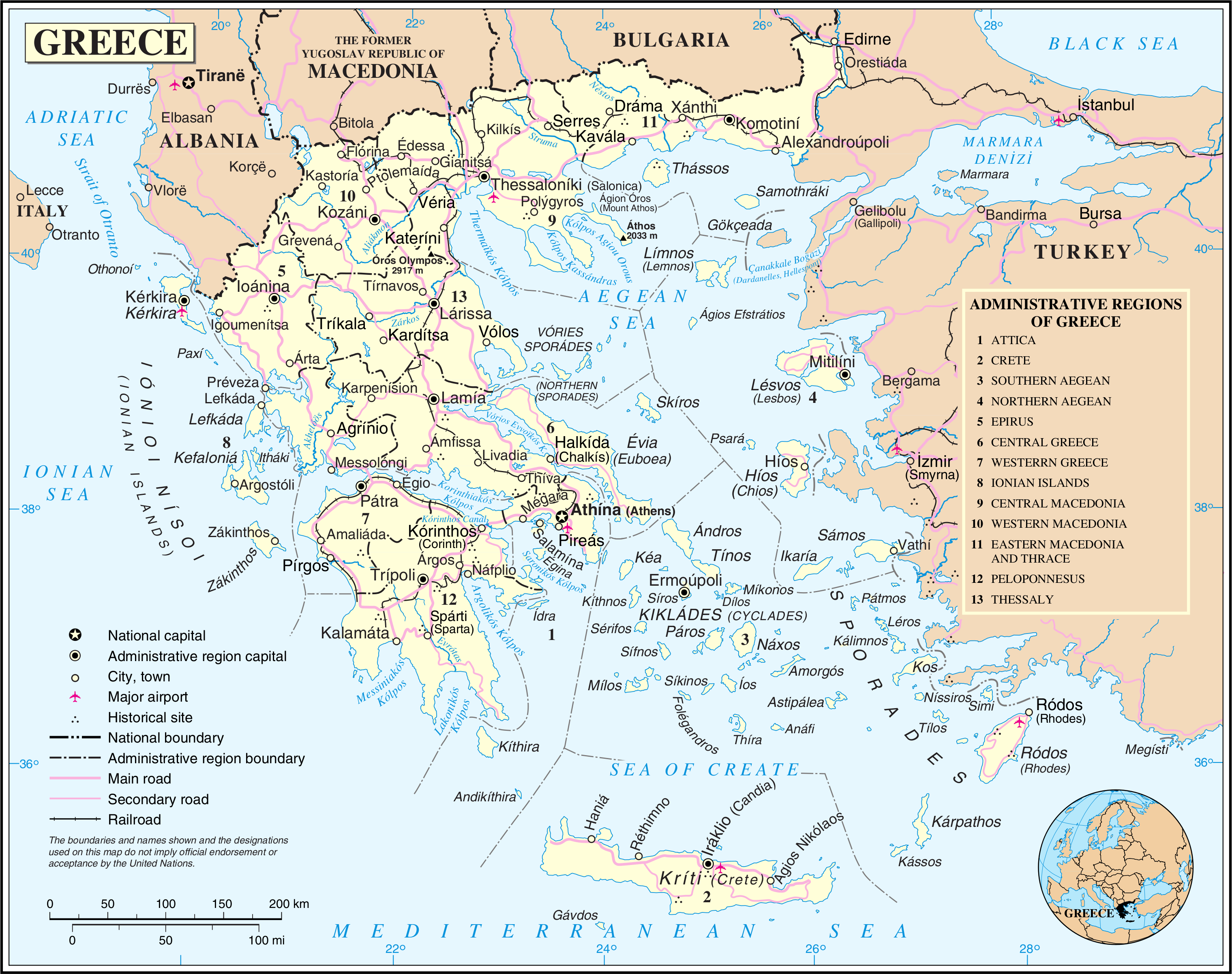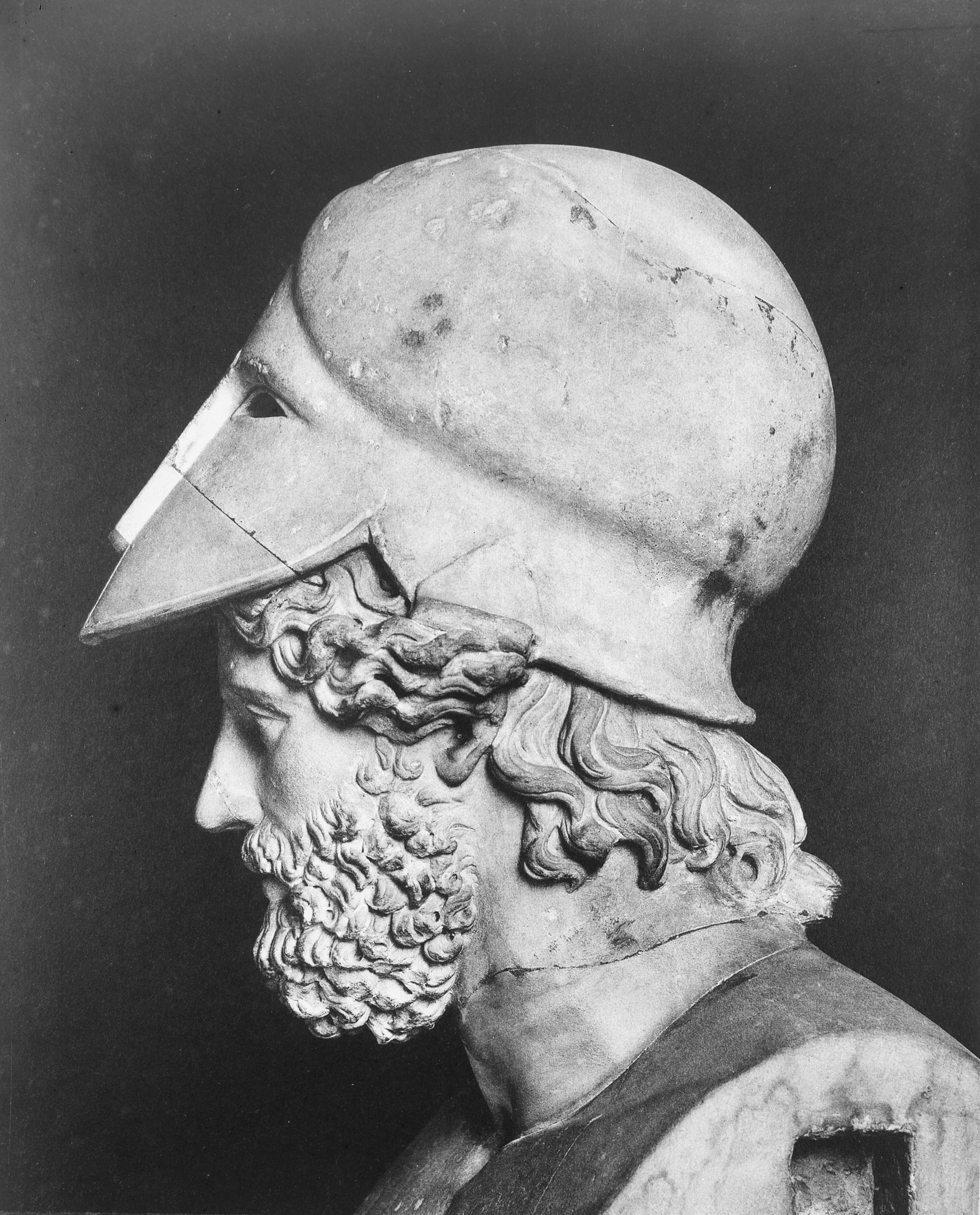|
Belbina (island)
Agios Georgios ( el, Άγιος Γεώργιος) or San Giorgio is a Greek unpopulated and uninhabited island in the entry of Saronic Gulf. It’s the largest uninhabited island of the Saronic Islands with an area of 4.3 km2. History In antiquity the island was named Belbina ( grc, Βέλβινα) and it is mentioned by Herodotus in a dialogue between Themistocles and his political opponent Timodemos from Afidnes. There was also a town of the same name on the island. Though some scholars have proposed that Agios Georgios should be identified as the ancient Psyttaleia which was involved in the Battle of Salamis, the consensus remains with the island that has long been known as Lipsokoutali, now renamed Psyttaleia. Modern times In 2016 a 73 MW wind farm was built on the island by Terna Energy, and delivers about 250 GWh electricity per year to Athens. Administratively, the island has belonged to the municipality of Hydra since 1834. In recent years, the municipality of Lavreo ... [...More Info...] [...Related Items...] OR: [Wikipedia] [Google] [Baidu] |
Saronic Islands
The Saronic Islands or Argo-Saronic Islands is an archipelago in Greece, named after the Saronic Gulf in which they are located, just off the Greek mainland. The main inhabited islands of this group are Salamis Island, Salamis, Aegina, Agistri, and Poros. The islands of Hydra, Saronic Islands, Hydra and Dokos, which lie off the northeast tip of the Peloponnese (technically between the Saronic Gulf and the Argolic Gulf), are sometimes included as part of the Saronic Islands. Many mainland Greeks have vacation homes in the Saronic Islands, which are regularly served by ferries from the Athen's port of Piraeus and the Peloponnese. Salamis, the largest island of the group, is where the ancient Greek navy defeated the Persians in the Battle of Salamis. Main islands See also *List of islands of Greece References Saronic Islands, Saronic Gulf Landforms of Islands (regional unit) Archipelagoes of Greece Aegean islands {{Attica-geo-stub ... [...More Info...] [...Related Items...] OR: [Wikipedia] [Google] [Baidu] |
Belbina (Argolis)
Belbina ( grc, Βέλβινα) was a town on a small island of the same name (now known as St. George). The island was very lofty and difficult to access, situated at the entrance of the Saronic Gulf, about 10 miles (16 km) from the promontory of Sunium. Although nearer to Attica than the Peloponnesus, it was reckoned to belong to the latter, in particular to ancient Argolis. Therefore, it was inhabited by the Dorians, and was probably a colony from Belemina (also written Belmina and Belbina), a town on the confines of Laconia and Arcadia. Themistocles Themistocles (; grc-gre, Θεμιστοκλῆς; c. 524–459 BC) was an Athenian politician and general. He was one of a new breed of non-aristocratic politicians who rose to prominence in the early years of the Athenian democracy. A ... quotes the island as one of the most insignificant spots in ancient Greece. Although the island is now uninhabited, it was inhabited in antiquity. On the slopes of its hills ther ... [...More Info...] [...Related Items...] OR: [Wikipedia] [Google] [Baidu] |
Lavreotiki
Lavreotiki is a municipality at the southeasternnmost tip of the Attica peninsula in the Greek regional unit of East Attica. Its municipal seat is the town of Laurium (''Lavrio''). It is historically important as a significant ancient mining district, most notably in the villages of Laurium and Thorikos on the southeastern seaboard during the 6th, 5th, and 4th centuries BCE. As such it financed the wealth of Athens and the emergence of the Athenian Empire through the slave-powered mining efforts for silver and lead, beginning with the discovery of 2 deep-vein mining efforts during the 480's. Prior to that development, which at Themistocles urging in 483 BC led to the expansion of the Athenian fleet to 200 ships, only surface-mining was deployed as a technique for harvesting silver. More than 250 ore washeries have been identified by archaeologists and geologists in the district. Municipality The municipality Lavreotiki was formed at the 2011 local government reform by the merge ... [...More Info...] [...Related Items...] OR: [Wikipedia] [Google] [Baidu] |
Hydra (island)
Hydra, or Ydra or Idra ( el, Ύδρα, Ýdra, , Arvanitika: Nύδρα/Nidhra), is one of the Saronic Islands of Greece, located in the Aegean Sea between the Myrtoan Sea and the Argolic Gulf. It is separated from the Peloponnese by a narrow strip of water. In ancient times, the island was known as Hydrea (Ὑδρέα, derived from the Greek word for "water"), a reference to the natural springs on the island. The municipality of Hydra consists of the islands Hydra (pop. 1,948, area ), Dokos (pop. 18, area ), and a few uninhabited islets, total area . The province of Hydra ( el, Επαρχία Ύδρας) was one of the provinces of the Argolis and Corinthia prefecture from 1833 to 1942, Attica prefecture from 1942 to 1964, Piraeus prefecture from 1964 to 1972 and then back to Attica as part of the newly establishment Piraeus prefecture of Attica prefecture. Its territory corresponded with that of the current municipality. It was abolished in 2006. Today the municipality o ... [...More Info...] [...Related Items...] OR: [Wikipedia] [Google] [Baidu] |
Terna Energy
Terna Energy ( el, ΤΕΡΝΑ Ενεργειακή) is a Greek renewable energy company that is listed on the Athens Exchange. The company is a subsidiary of Greek conglomerate GEK Terna, which through its subsidiary Heron S.A. is as well involved in the construction and operation of thermoelectric power generation fuelled with natural gas. ''Terna Energy'' however exclusively produces energy from renewable energy sources, including wind farms and small hydroelectric plants. It also constructs renewable energy plants and integrated process units for the overall management and energy utilization of wastes and biomass. The company was incorporated in 1997 as a subsidiary of Terna, which in 1999 merged with GEK to form Greece's largest conglomerate. The Athens-based company has been listed at the Athens Exchange since 2009 and belongs to the 25 companies forming the FTSE/Athex Large Cap index. In 2013, U.S. investment firm York Capital Magagement bought a 10% share of parent compa ... [...More Info...] [...Related Items...] OR: [Wikipedia] [Google] [Baidu] |
Wind Farm
A wind farm or wind park, also called a wind power station or wind power plant, is a group of wind turbines in the same location used Wind power, to produce electricity. Wind farms vary in size from a small number of turbines to several hundred wind turbines covering an extensive area. Wind farms can be either onshore or offshore. Many of the largest operational onshore wind farms are located in China, India, and the United States. For example, the List of onshore wind farms, largest wind farm in the world, Gansu Wind Farm in China had a capacity of over 6,000 megawatt, MW by 2012,Watts, Jonathan & Huang, CecilyWinds Of Change Blow Through China As Spending On Renewable Energy Soars ''The Guardian'', 19 March 2012, revised on 20 March 2012. Retrieved 4 January 2012. with a goal of 20,000 MWFahey, JonathanIn Pictures: The World's Biggest Green Energy Projects ''Forbes'', 9 January 2010. Retrieved 19 June 2019. by 2020.Kanter, DougGansu Wind Farm ''Forbes''. Retrieved 1 ... [...More Info...] [...Related Items...] OR: [Wikipedia] [Google] [Baidu] |
Battle Of Salamis
The Battle of Salamis ( ) was a naval battle fought between an alliance of Greek city-states under Themistocles and the Persian Empire under King Xerxes in 480 BC. It resulted in a decisive victory for the outnumbered Greeks. The battle was fought in the straits between the mainland and Salamis, an island in the Saronic Gulf near Athens, and marked the high point of the second Persian invasion of Greece. To block the Persian advance, a small force of Greeks blocked the pass of Thermopylae, while an Athenian-dominated Allied navy engaged the Persian fleet in the nearby straits of Artemisium. In the resulting Battle of Thermopylae, the rearguard of the Greek force was annihilated, while in the Battle of Artemisium the Greeks suffered heavy losses and retreated after the loss at Thermopylae. This allowed the Persians to conquer Phocis, Boeotia, Attica and Euboea. The Allies prepared to defend the Isthmus of Corinth while the fleet was withdrawn to nearby Salamis Island. Al ... [...More Info...] [...Related Items...] OR: [Wikipedia] [Google] [Baidu] |
Psyttaleia
Psyttaleia ( el, Ψυττάλεια) is an unpopulated and uninhabited island in the Saronic Gulf between the harbor of Piraeus and the Kynosoura peninsula on Salamis Island, Greece. It covers an area of 0.375 square kilometers. The island houses Athens' largest sewage treatment planthttps://www.eydap.gr/userfiles/c3c4382d-a658-4d79-b9e2-ecff7ddd9b76/Fact-sheet-PWWTP.pdf which also the largest in Europe,Athens Stock Exchange , ''Elliniki Technodomiki TEB AE'', Retrieved on 2007-06-08. , ''Environmental protection works'', Retrieved on 2007-06-08. with a projected daily maximum drying capacity of 750 tons of sewage. [...More Info...] [...Related Items...] OR: [Wikipedia] [Google] [Baidu] |
Afidnes
Afidnes ( el, Αφίδνες, or Ἀφίδναι, from the Middle Ages until 1919: Κιούρκα - ''Kiourka'') is a small town in East Attica, Greece. Since the 2011 local government reform it is part of the municipality Oropos, of which it is a municipal unit. The municipal unit has an area of 34.638 km2. It is situated in the eastern foothills of the Parnitha mountains, 3 km southwest of Polydendri, 5 km southeast of Malakasa and 27 km north of Athens city centre. Afidnes has a station on the railway from Athens to Thessaloniki. The Motorway 1 (Athens - Lamia - Thessaloniki) passes east of the town. It is part of Athens metropolitan area. Ancient Aphidna was one of the twelve ancient towns of Attica. In Greek mythology, Aphidna was the place where Theseus left Helen after he had abducted her. The archaeological site of Aphidnae is small. It was excavated in the 19th century. 13 Middle Helladic tumuli have been found. Settlements The municipal unit Afid ... [...More Info...] [...Related Items...] OR: [Wikipedia] [Google] [Baidu] |
Modern Regions Of Greece
The regions of Greece ( el, περιφέρειες, translit=periféries) are the country's thirteen first-level administrative entities, each comprising several second-level units, originally known as prefectures and, since 2011, as regional units. History The current regions were established in July 1986 (the presidential decree officially establishing them was signed in 1987), by decision of the interior minister, Menios Koutsogiorgas, as second-level administrative entities, complementing the prefectures (Law 1622/1986). Ν.1622/86 "Τοπική Αυτοδιοίκηση - Περιφερειακή Ανάπτυξη - Δημοκρατικός Προγραμματισμός", (ΦΕΚ 92/τ.Α΄/14-7-1986) Before 1986, there was a traditional division into broad historical–geographical regions (γεωγραφικά διαμερίσματα), which, however, was often arbitrary; not all of the pre-1986 traditional historical-geographic regions had official administrative bodie ... [...More Info...] [...Related Items...] OR: [Wikipedia] [Google] [Baidu] |
Themistocles
Themistocles (; grc-gre, Θεμιστοκλῆς; c. 524–459 BC) was an Athenian politician and general. He was one of a new breed of non-aristocratic politicians who rose to prominence in the early years of the Athenian democracy. As a politician, Themistocles was a populist, having the support of lower-class Athenians, and generally being at odds with the Athenian nobility. Elected archon in 493 BC, he convinced the polis to increase the naval power of Athens, a recurring theme in his political career. During the first Persian invasion of Greece he fought at the Battle of Marathon (490 BC) and was possibly one of the ten Athenian ''strategoi'' (generals) in that battle. In the years after Marathon, and in the run-up to the second Persian invasion of 480–479 BC, Themistocles became the most prominent politician in Athens. He continued to advocate for a strong Athenian Navy, and in 483 BC he persuaded the Athenians to build a fleet of 200 triremes; these prove ... [...More Info...] [...Related Items...] OR: [Wikipedia] [Google] [Baidu] |
Herodotus
Herodotus ( ; grc, , }; BC) was an ancient Greek historian and geographer from the Greek city of Halicarnassus, part of the Persian Empire (now Bodrum, Turkey) and a later citizen of Thurii in modern Calabria ( Italy). He is known for having written the '' Histories'' – a detailed account of the Greco-Persian Wars. Herodotus was the first writer to perform systematic investigation of historical events. He is referred to as " The Father of History", a title conferred on him by the ancient Roman orator Cicero. The ''Histories'' primarily cover the lives of prominent kings and famous battles such as Marathon, Thermopylae, Artemisium, Salamis, Plataea, and Mycale. His work deviates from the main topics to provide a cultural, ethnographical, geographical, and historiographical background that forms an essential part of the narrative and provides readers with a wellspring of additional information. Herodotus has been criticized for his inclusion of "legends and f ... [...More Info...] [...Related Items...] OR: [Wikipedia] [Google] [Baidu] |






